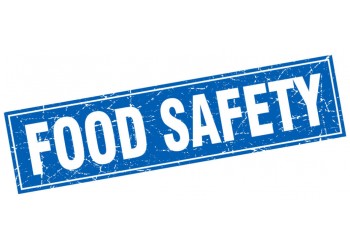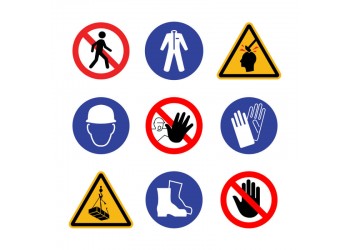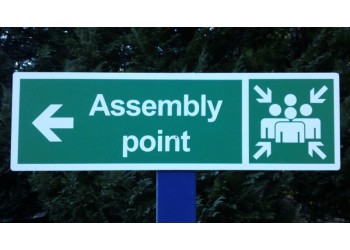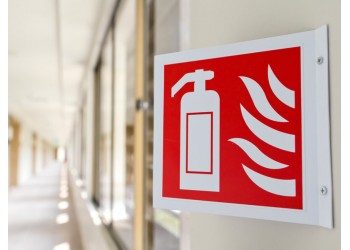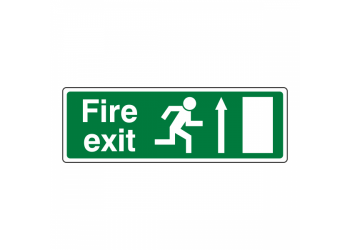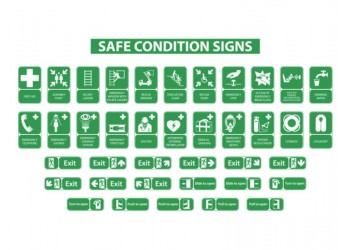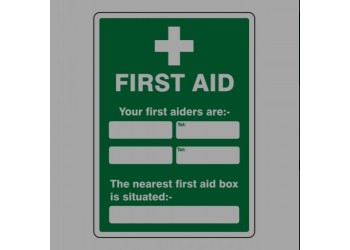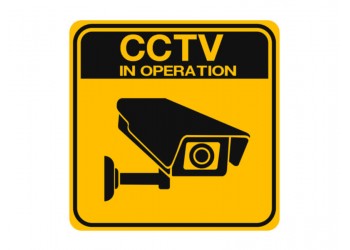Welcome to our blog post, where we aim to inform and guide health and safety officers and HR managers on the essential role of first-aid posters in enhancing safety in the workplace.
The Importance of First-Aid Posters
First-aid posters play a pivotal role in fostering a safe environment in the workplace. These informational tools offer clear and concise guidance that can be a beacon of knowledge in emergencies, potentially saving lives.
They are not just informative but are a legal requisite in the UK, underlining their significant role in maintaining safety standards.
Why First-Aid Posters are Necessary
First-aid posters serve as a constant reminder to the staff about the safety procedures, ingraining them in the daily consciousness of everyone in the workplace. They are indispensable during emergencies, offering readily accessible instructions that can guide individuals to respond swiftly and appropriately, mitigating the potential adverse outcomes of the emergency.
Moreover, these posters are an effective tool in training new employees, ensuring they are well-acquainted with the safety protocols from the outset. The visual nature of these posters facilitates easy understanding, making the training process more efficient.
Legal Requirements for First-Aid Posters
In the UK, the display of first-aid posters in the workplace is not just a safety measure but a legal requirement under the health and safety law. Adherence to this law is not optional; non-compliance could result in penalties, emphasising the necessity of regular audits to ensure the posters are current and visible at all times.
Selecting posters that meet the Health and Safety Executive (HSE) standards is crucial. It is incumbent upon the health and safety officers and HR managers to ensure that the posters displayed are up-to-date with the latest guidelines, fostering a safe workplace compliant with the legal requisites.
Having first-aid posters concerns compliance and creating a safe, informed, and responsive work environment. It is a step towards a safer future, ensuring every individual knows how to respond in emergencies, potentially saving lives and reducing the severity of injuries sustained.
It is a testament to an organisation’s commitment to the safety and well-being of its employees.
Different Types of First-Aid Posters
In the workplace, being prepared for any emergency is paramount. Various first-aid posters are designed to cater to different emergencies that might occur. These posters serve as a quick reference guide in critical situations, providing clear and concise instructions on responding to various accidents.
In this section, we delve into the details of each type of first-aid poster available for enhancing safety in the workplace.
First-Aid For Burns Poster
Overview
The First-Aid For Burns Poster is a crucial resource in the workplace, designed to equip both first aiders and non-first aiders with the essential knowledge needed to respond to burn injuries effectively. It is particularly indispensable in environments with a high risk of burn incidents, ensuring that individuals can take immediate and appropriate actions to mitigate the severity of burn injuries.
Key Features
The poster is a comprehensive guide, offering full-colour illustrations and user-friendly text that provides clear and concise instructions on a range of critical topics. These include:
- Burn classification advice helps individuals understand the different types of burns and their severities.
- Detailed guidance on how to treat both standard and chemical burns, ensuring that individuals can respond appropriately to different burn scenarios.
- Instructions on how to dress a burn injury appropriately, aiding in reducing infection risks and promoting quicker healing.
- Steps to handle situations where clothing is on fire, guiding individuals on responding swiftly to prevent further injuries.
- Advice on dealing with complicated burns and burns of varying severities, ensuring that even in the case of severe burns, the proper first aid steps are taken to preserve life and reduce harm.
The poster is fully updated with the latest guidance and best practices, making it a reliable resource for up-to-date information on handling burn emergencies effectively. It serves as a quick reference guide, helping to foster a safer work environment by empowering employees with the knowledge they need to respond to burn injuries promptly and correctly.
First-Aid For Children Poster
Overview
The First-Aid For Children Poster is an indispensable tool in environments where children are present, offering detailed guidance on administering first aid to children. Compiled by qualified health and safety practitioners, it encompasses a range of first-aid methods crucial in emergencies involving children.
Key Features
This poster is a rich resource with full-colour illustrations and user-friendly text, providing clear and concise instructions on handling various emergencies children might face. It covers a wide array of topics, including:
- Choking: Guiding on the immediate steps to undertake if a child is choking, ensuring quick action to prevent severe complications.
- Unresponsiveness: Offering guidance on responding when a child is unresponsive, facilitating immediate intervention to ascertain the child’s safety.
- Recovery Position: Illustrating the correct way to place a child so that they are in the recovery position is a vital step in maintaining an open airway and preventing further complications.
- Resuscitation: Providing detailed instructions on resuscitation, a life-saving technique in critical situations.
- Defibrillation: Guiding on defibrillators in emergencies is crucial in reviving a child experiencing cardiac issues.
- Fever: Offering advice on managing a child with a fever, ensuring comfort and monitoring the child’s condition.
- Asthma & Bleeding: Guiding in managing asthma attacks and controlling bleeding is essential in preventing exacerbation of the conditions.
The poster is continually updated to reflect the latest guidance and best practices in first aid, ensuring that caregivers and others are equipped with the most current and reliable information to handle emergencies effectively. It leverages child-friendly illustrations to clearly and effectively convey necessary actions, promoting quick and informed emergency responses.
First-Aid for Construction Sites Poster
Overview
Construction sites are environments where accidents are prone to occur, hence the indispensable role of the First-Aid for Construction Sites Poster in such settings. This poster serves as a comprehensive guide, offering clear step-by-step instructions on dealing with the most common injuries in a construction environment. It is designed to cater to first and non-first aiders, providing them with essential first aid and safety information.
Key Features
The poster is a rich resource of vital information, updated with the latest guidance and practices to ensure the relevance and accuracy of the advice given. It encompasses a range of topics critical to construction site safety, including:
- Electrical Burns: Detailed guidance is provided on recognising the signs and symptoms of electrical burns and the appropriate treatment procedures to follow.
- Managing Bleeds: The poster offers a systematic approach to managing bleeds, including the use of barriers, locating and examining the wound, and applying external direct pressure to control bleeding.
- Crush Injuries: It gives nuanced advice on handling crush injuries, delineating the steps to take depending on whether the individual has been crushed for less than or more than 15 minutes.
- Falls: This section covers a range of injuries resulting from falls, including spinal and head injuries and fractures, offering guidance on how to respond to each effectively.
- Managing Chemical Burns: Here, individuals are guided on the steps to take in the event of chemical burns to mitigate the damage and facilitate recovery.
- Getting Help: The poster underscores the importance of seeking professional assistance, providing emergency service numbers 999/112 to call in such situations.
The poster facilitates quick comprehension through full-colour illustrations and user-friendly text, enabling individuals to take swift and appropriate actions in emergencies. It is a beacon of safety awareness, encouraging a culture of readiness and responsiveness in the face of accidents.
First-Aid For Eyes Poster
Overview
Eye injuries demand an immediate and appropriate response to prevent further damage. The First-Aid For Eyes Poster serves as a comprehensive guide, offering clear step-by-step instructions on how to provide treatment to someone who has suffered an eye injury. It is designed to assist first aiders and non-first aiders, furnishing them with essential first aid and safety information.
Key Features
The poster is a reservoir of crucial information, presenting full-colour illustrations accompanied by user-friendly text to guide individuals in handling a variety of eye injuries effectively. It covers a range of topics including:
- Examining the Eye(s): Detailed guidance on examining injured eyes to assess the extent of the injury.
- Irrigating the Eye(s): Instructions on how to clean the eyes properly to prevent further damage.
- Chemical Contamination: Comprehensive guidance on responding to chemical contaminations, highlighting the dos and don’ts in such situations.
- Bruised Sockets: Advice on how to treat bruised sockets to alleviate pain and prevent complications.
- Arc Eye: Provides background information on arc eye condition, including signs, symptoms, and treatment procedures.
- Dressings: Guidance on how to deal with embedded foreign bodies, distinguishing between major and minor cases and the appropriate response for each.
- Getting Help: Instructions on when and how to call for emergency services, emphasising using 999/112 for immediate assistance.
This poster is fully updated with the latest guidance and practices, ensuring that individuals are equipped with the most current and reliable information to respond effectively to eye injuries. It employs vivid visuals and clear instructions to facilitate quick comprehension in emergency situations, making it an indispensable tool in the workplace.
Pre School First-Aid Poster
Overview
Children are naturally curious in preschool settings, sometimes leading to accidents. The Preschool First-Aid Poster is a vital resource that qualified health and safety practitioners crafted to guide caregivers in delivering effective first aid to infants and ensuring their safety during emergencies.
Key Features
The poster is a rich source of information, offering guidance on a wide array of first-aid methods that are essential in a preschool setting. It is designed with full-colour illustrations and user-friendly text to provide clear and concise instructions on handling various emergencies, including:
- Choking: Recognising the signs of choking and the immediate actions to assist a choking child.
- Unresponsiveness: Understanding the steps to follow when a child is unresponsive.
- Recovery Position: Detailed guidance on how to place infants, including those under one year old, in the recovery position to maintain an open airway and ensure their safety.
- Resuscitation: Following the DRAB (Danger, Response, Airway, Breathing) procedure, checking for the presence or absence of breathing and initiating CPR if necessary.
- Fever: Recognising the symptoms of fever and meningitis and understanding the actions to take during a seizure, including how to cool a child and administer medication appropriately.
- Asthma & Bleeding: Identifying the signs of an asthma attack and severe bleeding and knowing the correct actions to take in such situations, including where to seek assistance.
This poster is continually updated to reflect the latest guidance and best practices, ensuring caregivers have the most current information at their fingertips to respond effectively to emergencies and safeguard the well-being of the children in their care. It is an indispensable tool in preschool environments, promoting safety and preparedness through easy-to-follow instructions and vivid illustrations.
Workplace First-Aid Guide Poster
Overview
Every workplace should be equipped with a Workplace First-Aid Guide Poster to guide employees on responding to various emergencies that might occur in a workplace setting. This poster is a pivotal tool that ensures employees have the requisite knowledge to act swiftly and appropriately in the event of an accident, offering essential first aid and safety information for both first aiders and non-first aiders.
Key Features
The poster is a reservoir of vital information, providing clear, step-by-step instructions for dealing with the most common workplace emergencies. It is updated with the latest guidance and best practices, ensuring that the advice given is both current and in line with the recommended procedures.
The guidance encompasses a range of topics, including:
- Identifying dangerous situations to prevent escalation
- Responding promptly to emergencies and securing professional help
- Checking airways and breathing to ascertain the victim’s condition
- Procedures for resuscitation and defibrillation to revive individuals in critical conditions
- Handling fractures, burns, and bleeding to mitigate further harm
Full-colour illustrations accompany user-friendly text, facilitating a quick understanding during emergencies and aiding individuals in taking the correct actions to preserve life and reduce the severity of injuries.
In the following sections, we will delve deeper into specific types of first-aid posters that focus on accident response and CPR, providing a thorough understanding of how to use them effectively in emergencies.
Accident Response Posters
In the event of an accident, a swift and appropriate response can be the difference between life and death.
Accident response posters are vital in guiding individuals on the correct steps to take immediately after an accident. These posters are designed to be easily understandable, providing clear and concise instructions on evaluating the situation and offering basic first aid before professional help arrives.
Let us explore the various aspects covered in these posters.
Guidelines on How to Evaluate the Situation
When an accident occurs, it is crucial to quickly and accurately evaluate the situation to determine the best course of action. The poster guides individuals in assessing the severity of the injuries and the safety of the surroundings. It encourages individuals to remain calm and collected, ensuring they can think clearly and make informed decisions.
Steps to Follow Immediately After an Accident
Once the situation has been evaluated, the next step is to take immediate action to assist the injured person. The poster outlines the steps to follow, such as calling for help, applying pressure to stop bleeding, and ensuring the injured person is breathing. It provides a step-by-step guide on responding to various injuries, helping prevent further harm and preserve life.
Instructions on Providing Basic First Aid
Offering basic first aid is a critical step in accident response. The poster provides detailed instructions on administering first aid for different types of injuries, including burns, cuts, and fractures. It guides individuals on using first-aid kits effectively, ensuring they can assist before professional medical help arrives.
Guidance on When and How to Call for Professional Assistance
Calling for professional assistance is often necessary to respond to an accident. The poster guides individuals on when and how to call for help, providing information on the emergency numbers to dial and the details to provide to the emergency services. It emphasises the importance of calling for professional help in severe cases to ensure the best possible outcome.
CPR Posters
Cardiopulmonary resuscitation (CPR) is a life-saving technique used in emergencies where someone’s breathing or heartbeat has stopped.
CPR posters are designed to guide individuals on performing CPR correctly, highlighting the importance of early intervention and providing instructions on using automated external defibrillators (AEDs) and executing the recovery position.
Let’s delve into the details of each aspect covered in these posters.
Correct Techniques for Performing CPR
Performing CPR correctly is vital in preserving life in emergencies. The poster provides a detailed guide on the correct techniques for performing CPR, including the appropriate hand placement, the depth of compressions, and the rate of compressions. It encourages individuals to perform CPR confidently, ensuring they can provide the necessary assistance in critical situations.
The Significance of Early Intervention
Early intervention in emergencies can significantly increase the chances of survival. The poster emphasises the importance of acting quickly in emergency situations, encouraging individuals to step in and offer help without hesitation. It highlights the critical role that early intervention plays in saving lives, urging individuals to take immediate action in emergencies.
Instructions on Using an Automated External Defibrillator (AED)
An AED is a device used to help those experiencing sudden cardiac arrest. The poster provides clear instructions on how to use an AED, guiding individuals on how to operate the device correctly to deliver a shock and potentially save a life. It outlines the step-by-step process of using an AED, ensuring that individuals can use it effectively in emergencies.
The Importance and Execution of the Recovery Position
Once CPR has been administered, placing the individual in recovery is a crucial next step. The poster outlines the importance of the recovery position in maintaining an open airway and preventing aspiration. It provides detailed instructions on how to execute the recovery position correctly, ensuring the individual’s safety until professional help arrives.
In this section, we have explored the critical information contained in accident response and CPR posters, highlighting the importance of having these resources readily available in the workplace to guide individuals in responding effectively to emergencies.
This knowledge will empower you to take decisive action in emergencies, potentially saving lives and reducing the severity of injuries.
Placement and Maintenance of First-Aid Posters
Safety should always be a priority in a workplace’s bustling environment. A pivotal element that fosters a safe working environment is the strategic placement and regular maintenance of first-aid posters. These posters serve as a constant reminder and a quick reference guide in emergencies, helping to foster a culture of safety and awareness.
In this section, we delve deeper into the nuances of effectively placing and maintaining first-aid posters in the workplace.
Effective Poster Placement
Identifying the optimal locations for first-aid posters is critical in ensuring they serve their intended purpose effectively. It is imperative to place them in areas with high footfall to guarantee maximum visibility. These areas could include hallways, break rooms, and near machinery with higher risk factors.
Moreover, the posters must be clearly visible and unobstructed to ensure that individuals can easily access the vital information displayed. This means avoiding areas where they might be hidden behind doors or other structures.
A strategic approach would be to position them near first aid kits or Automated External Defibrillators (AEDs) to offer guidance where it is most likely to be sought during emergencies.
Furthermore, placing the posters at eye level facilitates easy reading, allowing individuals to quickly grasp the necessary information without straining. This thoughtful placement ensures that, in the event of an emergency, individuals can swiftly and accurately follow the guidance provided, potentially saving lives.
Regular Maintenance and Updates
Maintaining the pristine condition of first-aid posters is equally important as their strategic placement. Keeping them clean and undamaged is essential to preserve their readability and effectiveness over time.
In addition to physical maintenance, it is vital to replace outdated posters promptly to provide the most current and relevant information. Regular information review is necessary to ensure accuracy, reflecting the latest first-aid guidelines and procedures.
Engaging staff in the maintenance process helps keep the posters in good condition and heightens awareness regarding the importance of first-aid preparedness. It encourages a proactive approach to safety, where every team member understands and appreciates the value of the information displayed on the posters.
The meticulous placement and maintenance of first-aid posters are regulatory requirements and essential practices in fostering a safe and responsive work environment. By adhering to the guidelines outlined in this section, health and safety officers and HR managers can significantly enhance workplace safety, ensuring that all employees are equipped with the knowledge to respond effectively in emergencies.
Training Staff on First-Aid Procedures
In this section, we delve into the pivotal role of training staff on first-aid procedures, a critical step in leveraging the full potential of first-aid posters in the workplace. Proper training equips employees with the necessary skills to respond to emergencies and fosters a safe and responsive work environment.
Let us explore the avenues through which training can be imparted effectively, ensuring that the staff can utilise the information provided on the first-aid posters to its fullest extent.
Regular Training Sessions
The commitment to regular training sessions is at the heart of a robust safety culture. These sessions are designed to be a continuous learning journey where new staff members are introduced to the safety protocols during their inductions. It is a practice grounded in the belief that safety is everyone’s responsibility and that being well-acquainted with first-aid procedures is non-negotiable.
A significant aspect of these sessions is the utilisation of first-aid posters as visual aids. These posters serve as a constant reminder, encouraging staff to engage actively with the material and fostering an environment where questions are welcomed. It is a dynamic and interactive approach that ensures the information is disseminated, understood, and retained.
Refresher courses play a vital role in this learning ecosystem. They are structured to revisit the essential first-aid procedures periodically, ensuring that the knowledge remains fresh and top-of-mind. It is a proactive approach to safety, where learning is seen as a continuous journey, and the staff is encouraged to be vigilant at all times.
Simulated Emergency Scenarios
Beyond the regular training sessions, simulated emergency scenarios stand as a testament to a company’s dedication to safety. These drills are designed to mimic real-life emergencies, providing a safe space for employees to practise their responses to various situations.
The first-aid posters come to life during these drills, serving as a guide and a reference point, encouraging staff to demonstrate their understanding practically. It is a hands-on approach to learning, where feedback is given and areas for improvement are highlighted, fostering a culture of continuous improvement.
Recognition and rewards for effective responses are integral to this learning process. It reinforces learning and builds a sense of pride and responsibility among the staff. It is a strategy that goes beyond just imparting knowledge; it builds a community of individuals who are prepared, responsive, and committed to ensuring safety in the workplace.
Training staff on first-aid procedures is not just a regulatory requirement but a moral imperative. It is about building a culture where safety is not just a poster on the wall but a lived reality, a commitment to each other’s well-being, and a testament to the value the organisation places on every individual’s safety and health.
It is a journey of learning, practice, and continuous improvement, where every day is an opportunity to learn and to be safer than yesterday.
Promoting a Culture of Safety
In the workplace, fostering a culture of safety is paramount, and one effective way to achieve this is through the strategic use of first-aid posters. These posters serve as a vital tool during emergencies and play a crucial role in nurturing a safety-conscious environment.
Let us delve deeper into how these posters can be utilised to promote a culture of safety in the workplace.
Constant Reminders
Having Safety Instructions Visibly Displayed Serves as a Constant Reminder for Employees
Having first-aid posters prominently displayed in various workplace areas is a constant reminder for employees. These visual aids reinforce the importance of safety and ensure that individuals are continually reminded of the protocols to follow in case of an emergency. The posters can detail procedures for responding to different situations, such as choking incidents, which can be life-saving.
Furthermore, the posters can be customised to address specific hazards present in the particular workplace, thereby providing relevant and practical guidance. This constant visual reminder helps ingrain safety measures in the employees’ minds, making it second nature for them to act correctly and promptly during emergencies.
The More Familiar Staff Are with These Procedures, the More Likely They Are to Act Correctly in an Emergency
Familiarity with first-aid procedures is not just about having knowledge; it is about building a reflex that could potentially save lives. The more the staff are acquainted with the information on the first-aid posters, the more adept they become at responding to emergencies correctly and efficiently.
Employers in the UK are encouraged to undertake a first-aid needs assessment to understand their workplace’s specific requirements better. This assessment considers various factors, including the work’s nature, the workforce’s size, and potential hazards and risks. Based on this, employers can determine the appropriate first-aid provisions to implement, including deploying mental health first-aiders to address mental health issues in the workplace.
By ensuring that employees are familiar with the procedures outlined in the first-aid posters, employers foster a workplace where individuals are not just equipped to handle physical emergencies but are also sensitive to the mental well-being of their colleagues, thereby promoting a holistic approach to safety.
Employee Engagement
Encourage Employees to Take Part in Regular Safety Briefings and Discussions
Engaging employees in regular safety briefings and discussions is pivotal in promoting a safety culture. These sessions provide a platform for employees to learn, understand, and discuss the various safety protocols, including those outlined in the first-aid posters.
Moreover, these briefings can be a forum where employees are encouraged to share personal experiences and insights, fostering a collaborative approach to safety. Through such engagements, employees can be educated on the latest safety practices, including identifying and managing mental health issues, a critical aspect of workplace safety that has gained prominence recently.
Make Sure Everyone Understands the Importance of the Information on the Posters
Understanding the gravity of the information displayed on the first-aid posters is essential. Employers should take the initiative to ensure that every staff member comprehends these posters’ vital role in fostering a safe working environment.
This understanding goes beyond just knowing the procedures; it extends to appreciating the rationale behind each guideline and its potential impact in averting disasters and saving lives. Employers should, therefore, facilitate training sessions where experts can elucidate the information on the posters, ensuring a deep-seated understanding and respect for the safety protocols outlined therein.
Encourage Questions and Suggestions to Improve Safety Practices
Creating a culture where employees feel free to ask questions and offer suggestions regarding safety practices is vital. It fosters a sense of ownership and responsibility among the staff, encouraging them to be proactive in enhancing safety in the workplace.
Encouraging questions allows for the clarification of any ambiguities, ensuring that everyone is on the same page regarding safety procedures. Moreover, suggestions from employees can provide fresh perspectives and innovative solutions to improve safety measures, creating a safe workplace that is adaptive to the evolving needs and dynamics of its environment.
First-aid posters are not just informational tools; they are a cornerstone in building a culture of safety in the workplace. By promoting constant reminders and encouraging employee engagement, employers can create a work environment where safety is a priority and a value ingrained in every individual.
Conclusion
In conclusion, first-aid posters play a pivotal role in promoting workplace safety. They provide crucial information during emergencies and serve as a daily reminder of safety procedures. For health and safety officers and HR managers, they are an indispensable tool in maintaining a safe and well-informed workforce.
If you have any further queries or require advice on first-aid posters, please do not hesitate to contact us.

